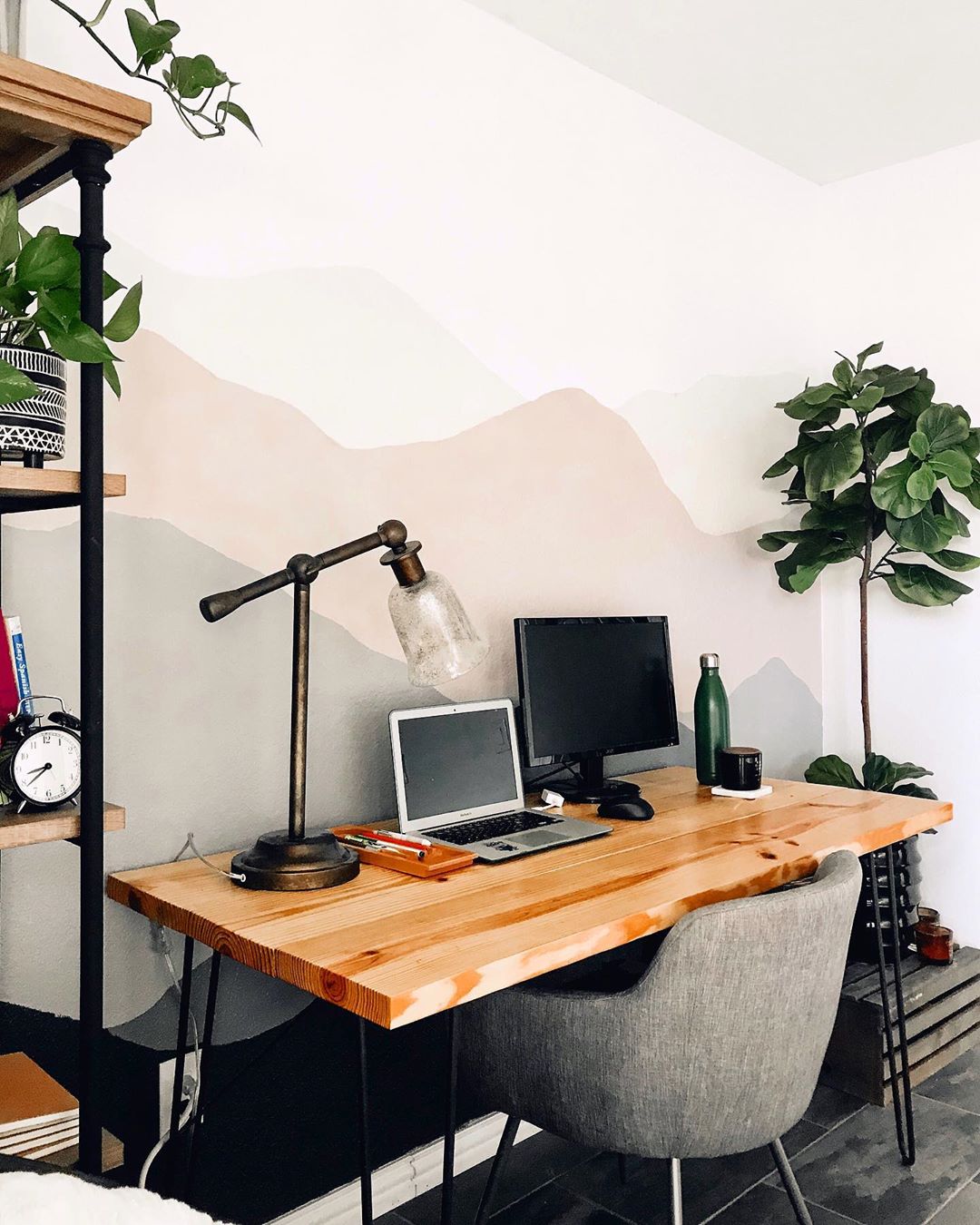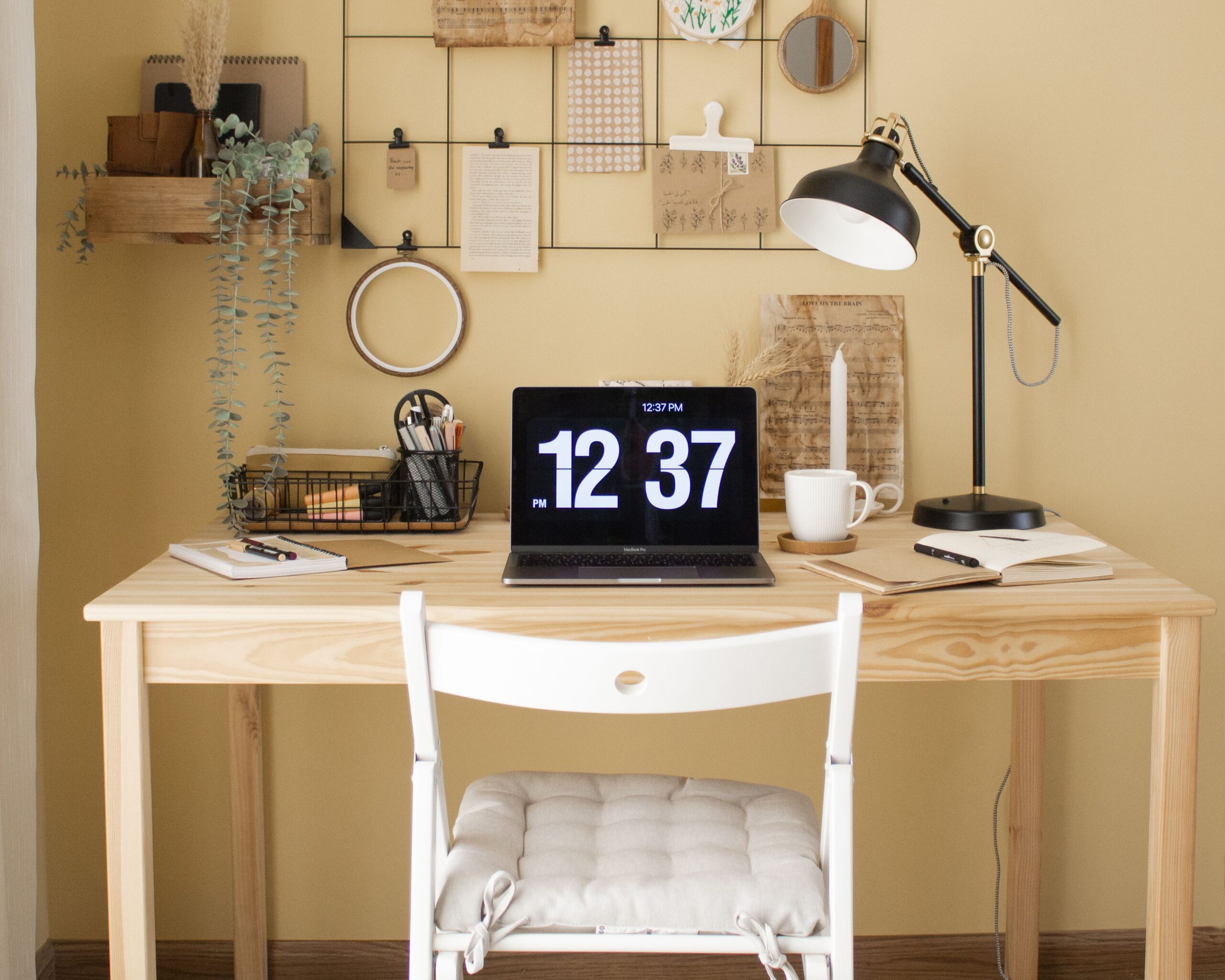Small offices can be tricky to light. You want a lamp that is bright enough to illuminate the entire space, but you don’t want it to be so large that it takes up too much room. Here are a few tips for choosing the perfect lamp for your small office space.
First, consider the size of the office. If it’s very small, you’ll want a lamp that is compact and doesn’t take up too much space. A desk lamp is a good option in this case.
However, if the office is larger, you may want a floor lamp or even a chandelier.
Second, think about the type of light you need. If you’re working on projects that require a lot of precision, you’ll need brighter light so you can see what you’re doing clearly.
In this case, an LED lamp would be ideal. If you just need general lighting for reading and writing, then a softer light will suffice.
Third, take into account your budget.
Lamps can range in price from very affordable to quite expensive. It’s important to find one that fits within your budget so you don’t end up overspending.
Finally, choose a style that fits with the rest of the decor in your office.
You don’t want something that sticks out like a sore thumb and looks out of place.
- Decide on the size of lamp you need
- A small office space will likely require a smaller lamp
- Consider the style of your office and choose a lamp that compliments it
- Determine what type of lighting you need
- If you need task lighting, look for a lamp with a focused beam
- If you want to create a more ambient atmosphere, choose a lamp with a diffused light
- Select the right finish for your lamp
- Some lamps come in multiple finishes, so you can choose one that best fits your office space

Credit: www.extraspace.com
How Do You Light a Small Office Space?
If you’re looking to add a bit of light to your small office space, there are a few things you’ll need to take into consideration. First, think about the type of light you want to add. Do you want something bright and cheery?
Or something more subdued and calming? Once you’ve decided on the overall tone, you can start shopping for fixtures.
If your office space is on the smaller side, wall sconces are a great option.
They don’t take up any floor or table space, and they can provide just the right amount of light for reading or working at a computer. For a more dramatic look, try adding a chandelier or pendant light. Just make sure it’s properly secured and that it won’t be too overwhelming for the space.
Table lamps are another good option, especially if you have a desk with plenty of surface area. You can also use them to create different lighting zones within your office; for example, place one lamp on your desk for task lighting and another in the corner for ambient lighting. Just be sure not to put them too close together, as that can create an unpleasant glare.
Finally, don’t forget about natural light! If your office has windows, open them up during the day to let in some sunshine. And if possible, rearrange your furniture so that you’re not sitting directly under a window (that can cause eye strain).
By taking advantage of both artificial and natural light sources, you can create a well-lit office space that’s both functional and stylish.
How Do I Choose an Office Lamp?
If you’re looking for an office lamp, there are a few things to keep in mind. First, consider the type of light you need. If you’re looking for a lamp to provide general lighting, a task lamp might be best.
These lamps are designed to provide focused light, making them ideal for reading or working at a computer. If you need a lamp that will accentuate your decor, choose one with a stylish base or shade.
Next, think about the size of the lamp.
A small desk might not accommodate a large floor lamp, so make sure to measure your space before you shop. It’s also important to consider how much light you need. If you have a lot of natural light in your office, you might not need a very bright lamp.
However, if your office is dimly lit, look for a lamp with higher wattage bulbs.
Finally, take into account your budget when selecting an office lamp. You can find lamps at all price points, so it’s important to set aside enough money to get the quality and style of lamp that you want.
With these tips in mind, shopping for an office lamp should be easy and fun!
What Type of Lighting is Best for Offices?
The type of lighting that is best for offices depends on a variety of factors, including the size and layout of the space, the type of work that takes place there, and the personal preferences of the occupants. There are a few general principles that can guide office lighting design, however, to ensure that the space is both functional and comfortable.
In general, offices should be well-lit without being overly bright.
This can be achieved by using a mix of overhead fluorescent lights and task lighting such as desk lamps. The light should be diffused rather than direct to avoid glare and shadows. It is also important to consider the color temperature of the light bulbs used; cool white bulbs are typically best for offices as they help to reduce eyestrain and fatigue.
Another key factor in office lighting is adjustability. Many people find that they need different levels of light throughout the day, so it is important to have fixtures that can be dimmed or turned off entirely when not needed. This also allows for greater energy efficiency as unused lights can simply be turned off rather than left on all day long.
Finally, it is important to consider how natural light will play into the office design. If possible, windows should be positioned so that desks are near them to take advantage of daylighting. However, blinds or shades may need to be used during certain times of day to prevent glare from causing problems with computer screens or other tasks that require high levels of visual acuity.
What Lighting is Best for a Small Room?
There are a few things to consider when choosing the best lighting for a small room. The first is the size of the room. A small room will need less light than a large room.
The second is the type of light you want to use. There are three types of light: incandescent, fluorescent, and LED. Incandescent bulbs produce more heat than other types of bulbs and are not as energy efficient.
Fluorescent bulbs are more energy efficient than incandescent bulbs, but they can flickering and produce a harsh light. LED bulbs use very little energy and do not produce any heat, but they can be expensive. The third thing to consider is the color of the light you want to use.
White light will make a room feel brighter, while yellow or blue light will make a room feel warmer.
When choosing the best lighting for a small room, it is important to consider the size of the room, the type of bulb you want to use, and the color of light you want to use.
How To Make Your Home Office AWESOME
Best Office Lighting for Computer Work
Most people spend the majority of their daytime hours indoors, working at a computer. And while there are many factors that contribute to optimal work performance, one of the most important is lighting. The best office lighting for computer work is bright, even, and glare-free.
Many offices have fluorescent lighting, which can cause headaches and eye strain. If you can, try to avoid this type of light by using natural light from windows or investing in task lights that mimic natural light. These will help reduce eye fatigue and improve your overall mood and productivity.
When choosing artificial lighting for your office, make sure to select bulbs that emit little to no blue light. Blue light has been shown to disrupt sleep patterns and can cause digital eye strain. Instead, opt for warm white LEDs or incandescent bulbs, which will provide a softer light that’s easier on the eyes.
Finally, be sure to position your computer screen so that there’s no glare coming from any nearby light sources. This will help reduce eye strain and allow you to work more comfortably for longer periods of time.
Conclusion
In order to choose a lamp for a small office space, it is important to consider the type of light that is needed as well as the size and shape of the room. For example, if the space is used primarily for computer work, then a task lamp with focused light would be a good choice. Alternatively, if the space is used for meetings or other activities where more ambient light is needed, then a floor lamp or table lamp might be a better option.
It is also important to consider the style of the room and furniture when choosing a lamp, as well as any personal preferences.
